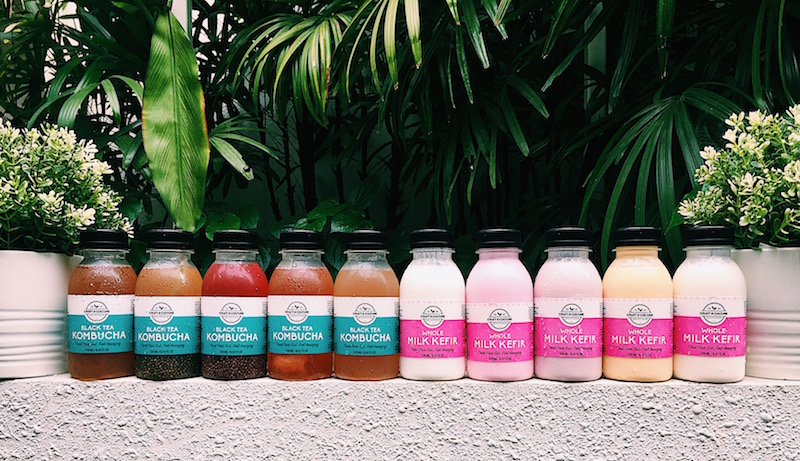Ah, fermented drinks. They’re not exactly the most glamorous beverages on the planet, but they sure are full of probiotic goodies that can be best buds with your gut. The natural, good bacteria they possess is believed to help improve digestion, enhance immunity, and supplement diets with minerals and vitamins.
Central to the benefits of fermentation, apart from foods such as sauerkraut, tempeh, and yogurt, are two powerhouses known as kombucha and kefir. The former is a fermented black tea concoction that’s lightly sparkling and reminiscent of apple cider, while the latter is fermented from kefir cultures (bacteria and yeasts), with a sour tinge and a texture that’s similar to Greek yogurt.
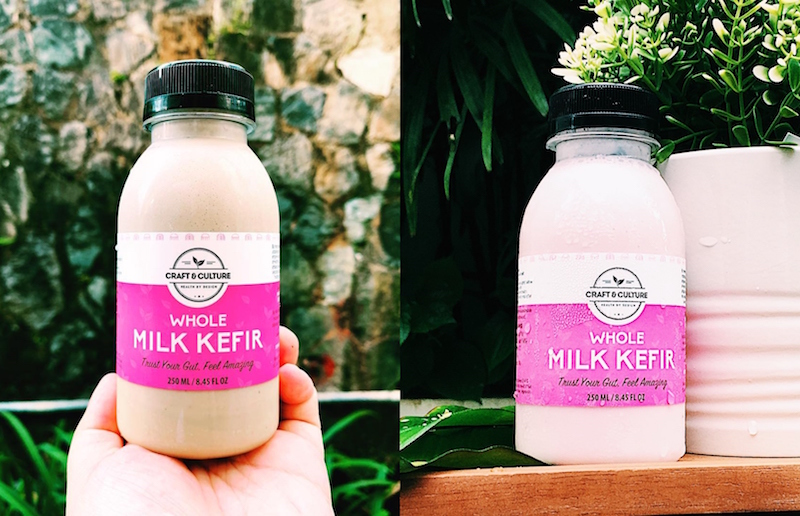
Curious about these two good-for-you brews? So were we, which is why we made our way down to Craft & Culture’s Kovan headquarters one sunny afternoon to talk to the two bubbly ladies behind this homegrown brand.
Set up in 2016, the company combines the expertise of co-founders Winnie and Zhiwei, who have more than 15 years of brewing experience between them. Initially colleagues who got to know each other’s probiotic habits during a business trip to the US, the duo caught the entrepreneur bug when they realized there wasn’t a local store in Singapore offering kombucha and kefir that appealed to them.
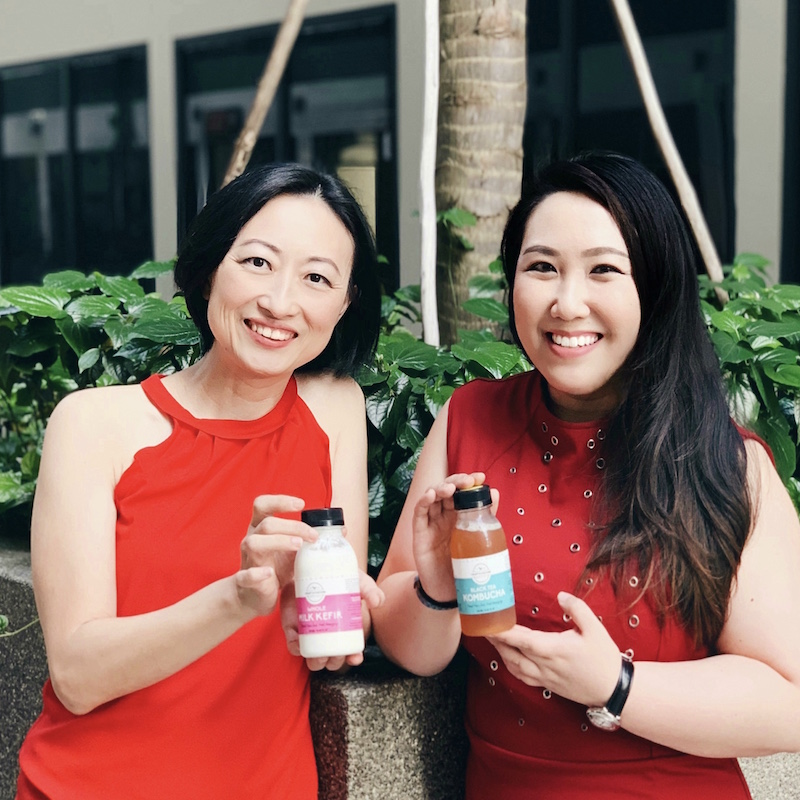
Originally an online business on Facebook, reaching out by word of mouth to friends of friends, Craft & Culture soon expanded its business to “spread the gospel of kombucha and kefir” through brand collaborations (including names like Disney and Fresh) and events.
Both have their own familiar domain: Winnie with kombucha and Zhiwei with kefir, after they discovered each one excelled in producing their respective brews to a more palatable effect. But even though the pair have been experimenting in their kitchens to treat indigestion and allergy problems for years, they’re not just home brewers – they’ve got backgrounds in biomedical sciences, skincare, and engineering.
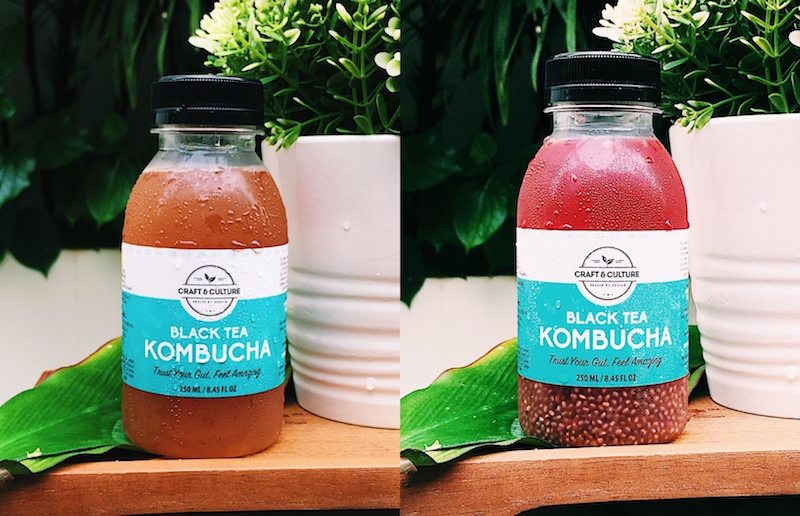
Stepping into their tiny shop space, which doubles up as an office and a kitchen, you notice at once how clean and neat the brewing corner is.
“Everything must be very sterilized,” Zhiwei says, noting that, unlike home brewers who ferment stuff in their multi-purpose kitchen, no outside food is allowed here and the place is thoroughly cleaned after each session.
Looking around, we spot big vats of liquid taking their time turning into kombucha, each with a different patterned cloth covering the top. Winnie lets us in on a cheeky secret: every jar and batch has a name, and they’re all treated as if they’re “live things” that the duo occasionally hold a one-sided conversation with. Even her kombucha cultures, called scobys (symbiotic culture of bacteria and yeast), have gotten nicknames like “scoby doo” and “obi wan scoby”.
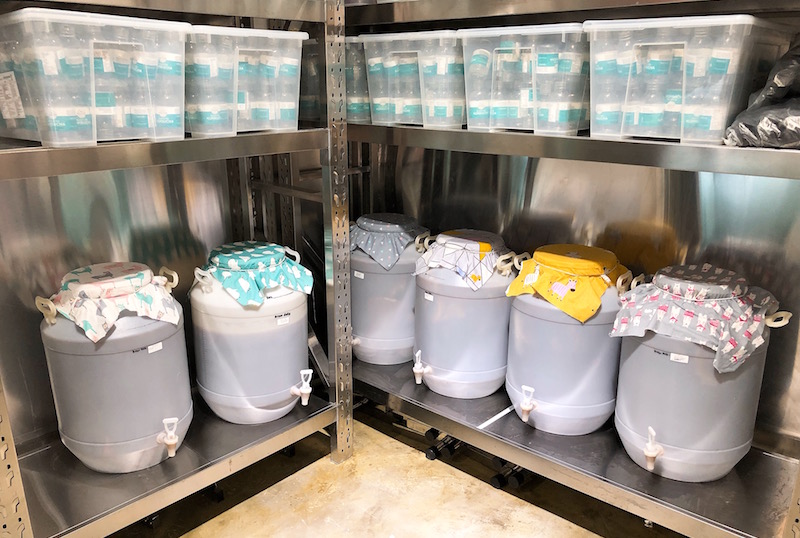
With a passion for probiotics that stems from her university days, Winnie tells us about her past struggles with eczema and allergies. “For the longest time, I felt very sluggish about my health. I wasn’t in pain or sick; I just didn’t feel great and I didn’t know why,” she says. It wasn’t until her friends introduced the power of fermented goods to her diet that her acne cleared up and her tolerance to allergy triggers went up.
After inheriting her cultures from a Russian woman in the US, Winnie started on her journey of experimentation with kombucha. Success didn’t come without trials, though, as cultures can die if they’re not treated properly.
“That is the danger to home brewing,” Winnie warns, describing how people have at times confused mold for yeast. “Sometimes the strains can evolve, and you don’t know if they’re brewing kombucha or… something else.”
On their “better-tasting” brews, Winnie explains that the taste is likely linked to their “labor of love” long-fermentation process over a couple weeks. Apparently, quick ones usually produce just vinegar, which would explain a number of one-note home brews we’ve tried that are merely fizzy and sour. Even though she only uses four ingredients for kombucha – black tea, sugar, water, and cultures – her concoctions end up with complex flavor profiles.
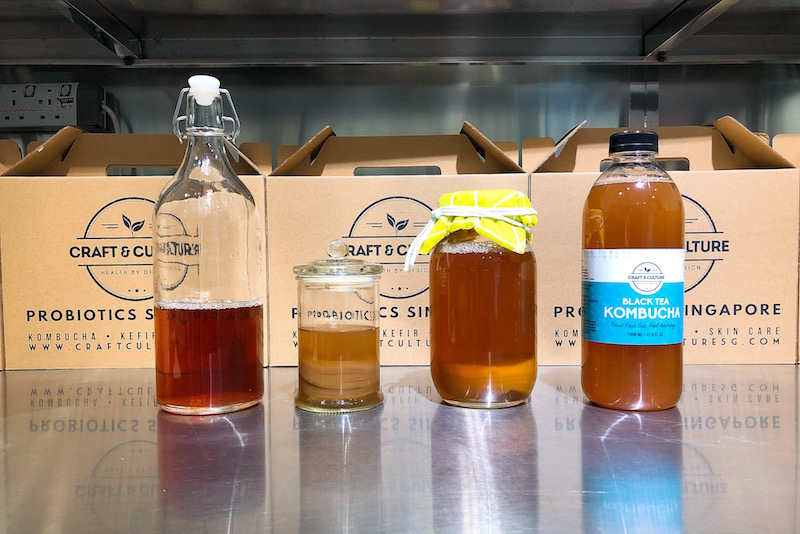
Each small batch may comprise of the same basic ingredients – all organic whenever possible – but results can differ subtly or wildly depending on the temperature, the type of cultures, and the brewing techniques.
And if you’re wondering why a brand that advocates gut health would add sugar into the mix, it’s because sugar is the bacteria’s food source. “A lot of people vilify sugar, but the moment you have a sugar-less version of kombucha, the bacteria is starved and it dies. What predominates then is yeast,” Winnie clarifies. “We don’t believe this is the way to go, because you’re drinking for the live bacteria, not the yeast. We don’t add a lot [of sugar], but it’s absolutely vital for the health of the bacteria.”
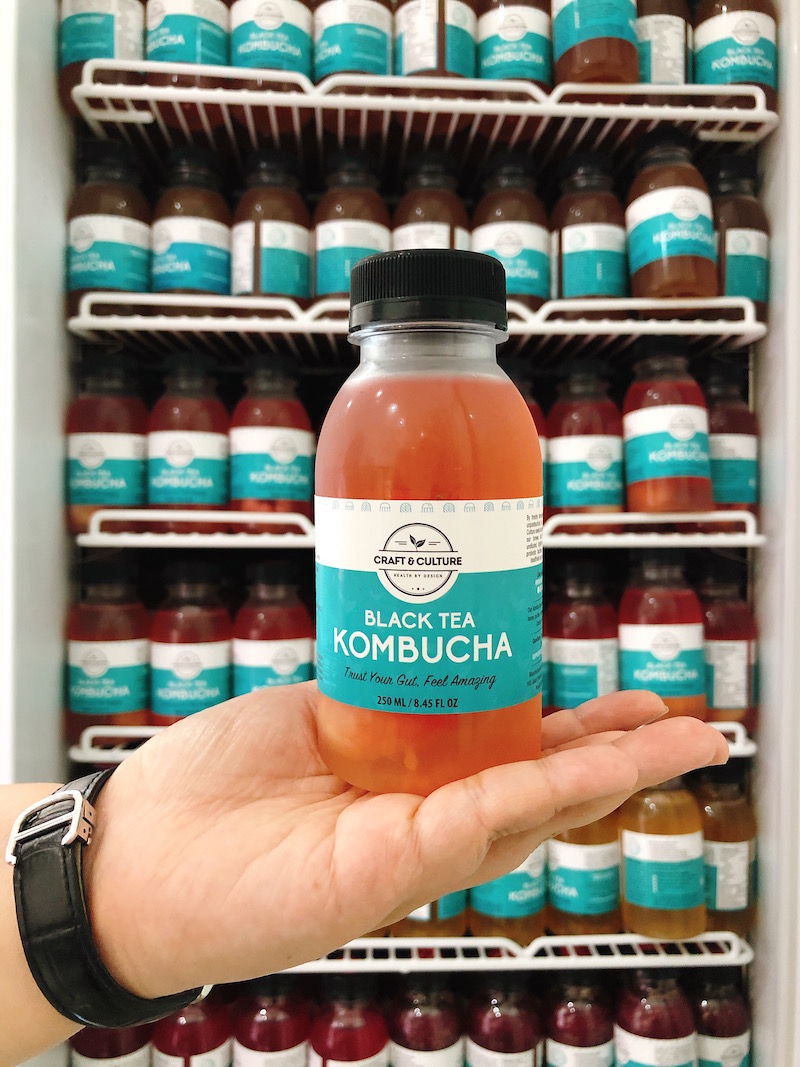
As for kefir, the process is simpler, consisting of cultures and full cream cow’s milk. To control the outcome of each brew, the temperature, timing, and duration must be monitored. Milk kefir ferments a lot faster than kombucha, taking just four to five days, and is friendly even to lactose intolerants. To consume, treat it just like yogurt, and blend fruits in or add toppings like granola if you’re after something sweeter.
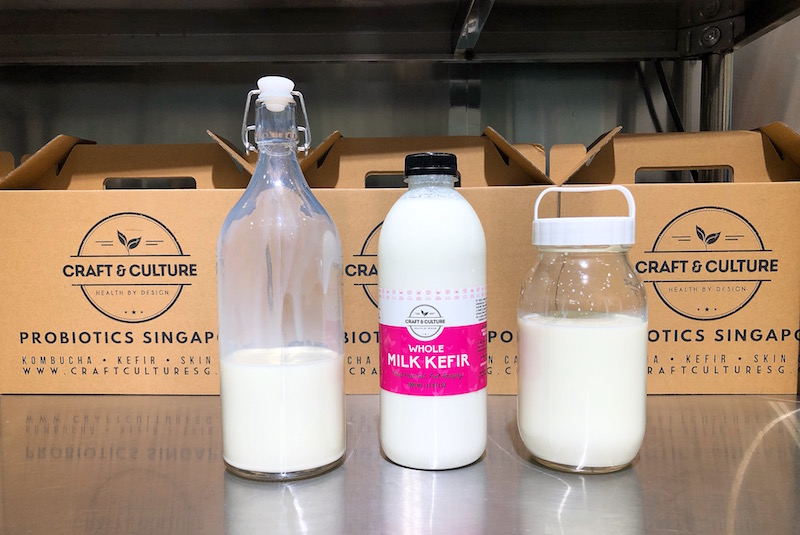
But these aren’t just for the health-conscious, the pair emphasize. They’re one of the more natural ways into probiotics instead of, say, popping a pill. In helping to relieve allergies and irritable bowel syndrome, kefir strengthens the immune system, while kombucha is said to boost joint health and digestion, increase energy levels, and aid the liver in detoxing. Both function in different ways, with up to 40 strains of probiotic bacteria in kombucha and almost 60 in kefir (for reference, regular yogurt has about three).
To make it a well-rounded diet, you can also take fermented foods such as miso, natto, kimchi, or even nata de coco (with the sugary syrup drained out, of course). “The whole idea is to introduce a cocktail of strains into your diet,” as Zhiwei puts it. But just remember: everything in moderation.
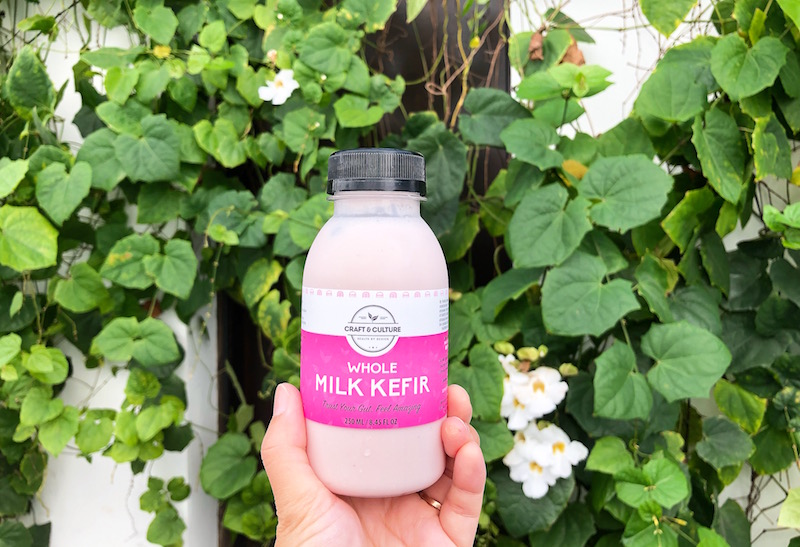
Craft & Culture may not have the cheapest fermented drinks in the industry, but Winnie and Zhiwei stand by the quality and probiotic diversity behind what they create. They’ve even got a kombucha skincare line of eczema balms and face masks, which is only released when demand is high enough and sells out almost immediately.
After all that build-up, we were keen to find out if their brews were as good as they claimed, so we sipped on bottles of original and flavored kombucha and kefir for a taste. Truth be told, we haven’t sampled much of a variety from other brands out there, but these ones were hands-down the best tasting drinks. Each beverage was subtle enough to make it pleasant on our palate, with a tinge of tartness and fizz from the kombucha, and a smooth consistency from the kefir that put it somewhere in between yogurt and Yakult.
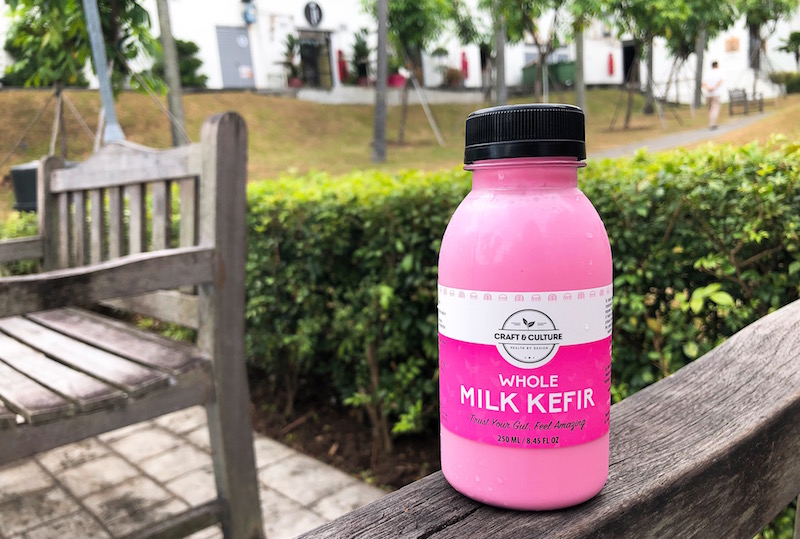
It took us less than a week to finish our fermented stash, so we can’t say with authority that we experienced all the benefits of the brand’s probiotics, but the drinks kept our usual belly bloat at bay, so there’s a good chance we’ll be heading back for more.
If you’re keen to try it out, the small but potent concoctions include kombucha flavors like ginger chia, lychee, and rose chia, as well as matcha, houjicha, rose bandung, and blueberry milk kefirs.
